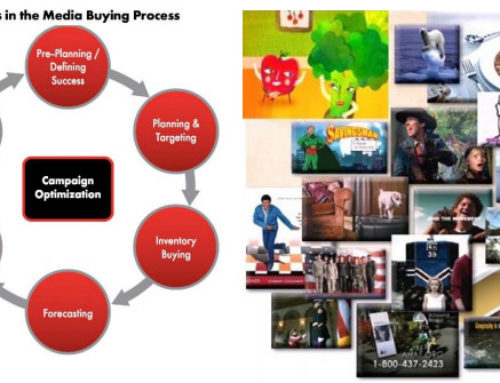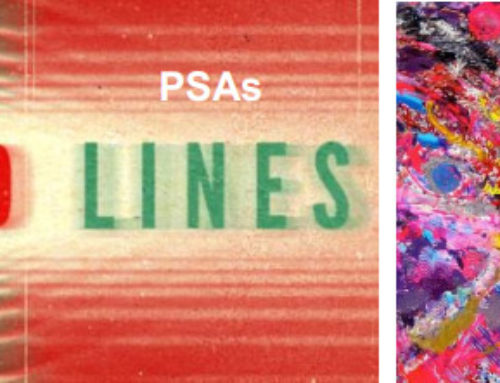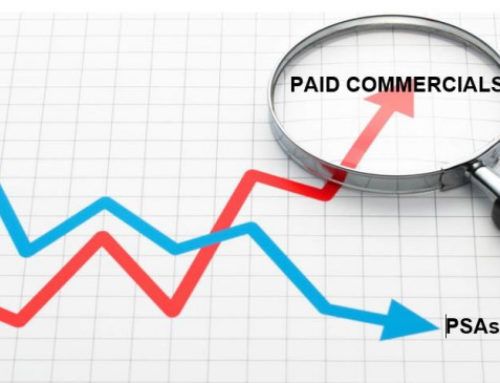The communication literature reveals a dearth of information on the benefits of using donated media strategies (PSAs) compared to paid strategies (advertising). Only one empirical study has been published, which is Murry, Stam, and Lastovicka’s article “Paid- Versus Donated-Media Strategies for Public Service Announcement Campaigns,” found in Public Opinion Quarterly (1996, Vol. 60, p.1-29).
Murry et al. note that PSAs have been debated for over four decades. Some of the problems of PSA programs are that they rarely able to emulate more expensive practices used by consumer-products advertising campaigns. One reason is because PSAs must rely on donated media rather than paid media schedules.
The authors state that some government marketers and charitable organizations, such as the Red Cross, have examined the financial feasibility of using paid-media schedules in fundraising. The findings are critical because organizations may face an irreversible decision, because once the media views them as “paid advertisers” it is possible the media will no longer provide them with free time.
PSA Issues
- PSAs are believed to be problematic for several reasons, according to Murry et al. First, campaign managers cannot control when, where, how often, or even whether target audiences are exposed to PSA messages.
- Second, because PSAs are played during times not bought by paid advertisers, much of the media time does not reach intended audiences.
- Third, many PSA messages have difficult persuasion tasks (such as behavior change), which require message repetition in order to be effective.
Murry et al. cite another challenge to PSA success: the decreased availability of donated media support. The media uses PSAs in time or space unsold to paid advertisers. Therefore, PSA usage may fluctuate with the health of the economy. A second factor influencing the amount of donated media is the large number of competing “good causes.” As the media rallies around certain causes such as AIDS or drug abuse, exposure to other causes may become more limited.
Paid Media Issues
Paid media PSA campaigns have been blinded several ways, writes Murry et al. Many government agencies at the federal and state level have no budgets for mass media expenses. In other communities, taxes may be levied to “demarket” products with health risks, such as cigarette excise taxes. Third, corporations often provide support for or launch their own PSA campaigns.
The authors recommend that public service planners measure the financial costs and benefits, before deciding to use paid-media campaign strategies. It is difficult to place a value on human suffering.
 Nonetheless, one can measure the economic costs of a single traffic fatality, for example, which is just over $2.6 million (including medical costs, property damages, legal costs, etc.). Similar calculations can cost out health outcomes including AIDS, smoking, or drug abuse. “Due to the high costs of some anti-social behaviors, campaigns need change only a small portion of behaviors in order to be cost-effective.”
Nonetheless, one can measure the economic costs of a single traffic fatality, for example, which is just over $2.6 million (including medical costs, property damages, legal costs, etc.). Similar calculations can cost out health outcomes including AIDS, smoking, or drug abuse. “Due to the high costs of some anti-social behaviors, campaigns need change only a small portion of behaviors in order to be cost-effective.”
Murry et al. designed a study to evaluate the effectiveness of donated-media PSAs versus paid-media PSAs on the behavior of drinking and driving.
They implemented a six-month, on-air mass media campaign in three different but comparable geographic sites. The campaign targeted 18-24 year-old males primarily, and 15-24 year-old males and females as a secondary audience. Wichita, KS served as the “paid-media” advertising campaign site; Kansas City, KS served as the “donated-media” or PSA site; and Omaha, NE served as the “control” site.
Monitoring began one year ahead of time to track any environmental changes such as citizen action, law enforcement, and alcohol rehabilitation programs, which might change the baseline attitudes and behaviors of the community.
In the paid site, $90,000 was spent on media time in TV, radio, newspaper, outdoor and movie theater trailers. Two thirds were spent on television, whereby spots were aired 183 times to the targeted audience. This level of advertising was designed to be comparable to many new-product advertising campaigns. In the donated site, the same materials were distributed as PSAs.
Public service directors were contacted monthly and encouraged to donate time or space targeting 18-24 year old males. Monitoring of TV stations showed that TV spots were aired approximately 100 times. Finally, the control site received no campaign treatment.
 The research measured pre-and post-campaign findings using two measures: first, self-reported estimates of drinking-driving behavior, and second, monthly counts of incapacitating motor vehicle accidents provided by state departments of highway safety.
The research measured pre-and post-campaign findings using two measures: first, self-reported estimates of drinking-driving behavior, and second, monthly counts of incapacitating motor vehicle accidents provided by state departments of highway safety.
The self-reported estimates were collected through random digit dialing telephone surveys of 18-24-year-old males. The accident data were analyzed for 57 months, including the 38 months before the intervention, during the 6-month campaign, and 13 months following the campaigns. For more details about the methodology, see Murry et all, 1996.
Results
- The results of the self-reporting dialing data showed that for both the paid- and donated media sites, the percentage of males who reported driving the previous month after consuming either four or six drinks went down.
- In contrast, the control site showed an increase in drinking-driving during the campaign period.
- For the group of males who had four drinks and drove, the decrease in drinkingdriving was statistically significant at both the paid- and donated-sites, compared to the control site.
- There was a lack of statistical significance in the drinking-driving after six drinks at the paid- and donated-sites compared to the control site.
- These findings show that both the paid- and donated-media campaigns were effective, but that the paid-media campaign was no more successful than the donated campaign.
- The accident data also showed that the average total of fatal or incapacitating accidents for the 18-24 male population also went down at the paid and donated campaign sites.
- Similarly, for the secondary audience of 14-24 males and females, accidents also declined in the paid (-18.9%) and donated (-12.8%) sites. The control site declined also, but a lesser rate (-10.6-9%).
Statistical tests were run to verify that the decline in accidents were not normal trends. For both sites, they found the decrease still to be reasonably strong. They did find that the paid- and donated-media campaigns were equally effective at reducing accidents in the primary target audience. They also found that the campaign’s effect was delayed and temporary. Within two months after the campaign completion, accident numbers returned to the baseline levels. According to the authors, this pattern is consistent with advertising theory.
Both Tactics Work
Murry et al. argued that the research shows both paid-media and free-media PSA campaigns can positively influence important social behaviors. The next step was to compare the two methods in terms of costs-to-benefits.
The researchers costed out the planning and evaluation research, message production, and paid-advertising costs for each campaign and compared it to the accident data. They found that the free-media campaign, over an 8-month period, benefited $13.52 per dollar spent on the campaign. (Actual campaign cost $221,000 and economic value of 16.5 fewer accidents, as a result, measured at $2,988,952 in economic benefit).
They found that the paid-media campaign benefited at $8.97 per dollar spent. (Actual campaign cost $311,000 and economic value of 15.4 fewer accidents, as a result, measured at $2,789,679 in economic benefit). The authors claim these are conservative cost-benefit analyses, because they only measured decreases in incapacitating accidents, and not less serious accidents which occur more frequently.
Murry et al.’s findings defied conventional wisdom that paid-media would outperform donated-media. The authors suggest three reasons for the results.
- First, the excellent creative quality of the PSAs may have diminished the need for higher message repetition.
- Second, because the target audience was young males, the donated airplay which typically occurs in undesirable broadcast times (i.e. “late night”) may have been fortuitously well-targeted.
- Third, the statistical methods were not able to measure small differences between paid- and donated-media, which may exist.
Based on the research, the authors recommend that social marketers do not abandon donated-media PSA campaigns for paid-media PSA campaigns. They add three qualifications to the recommendation.
- First, to add credence to the literature, their study should be replicated and cover more diverse social problems and locations.
- Second, this campaign was exceptional because it was able to take advantage of expensive research and planning practices typically employed by paidadvertising campaigns. Further research should examine how the expensive research and planning processes effect PSA campaign success.
- Third, because many social marketing organizations are financially weak, they cannot seriously consider switching to paid-media campaigns.
Thus, the authors state this question is better asked by larger government programs measuring expensive health outcomes, or organizations such as insurance companies who can afford to use paid-media campaigns and benefit from them. Therefore, the authors’ recommendation is not appropriate for all organizations.





Leave A Comment